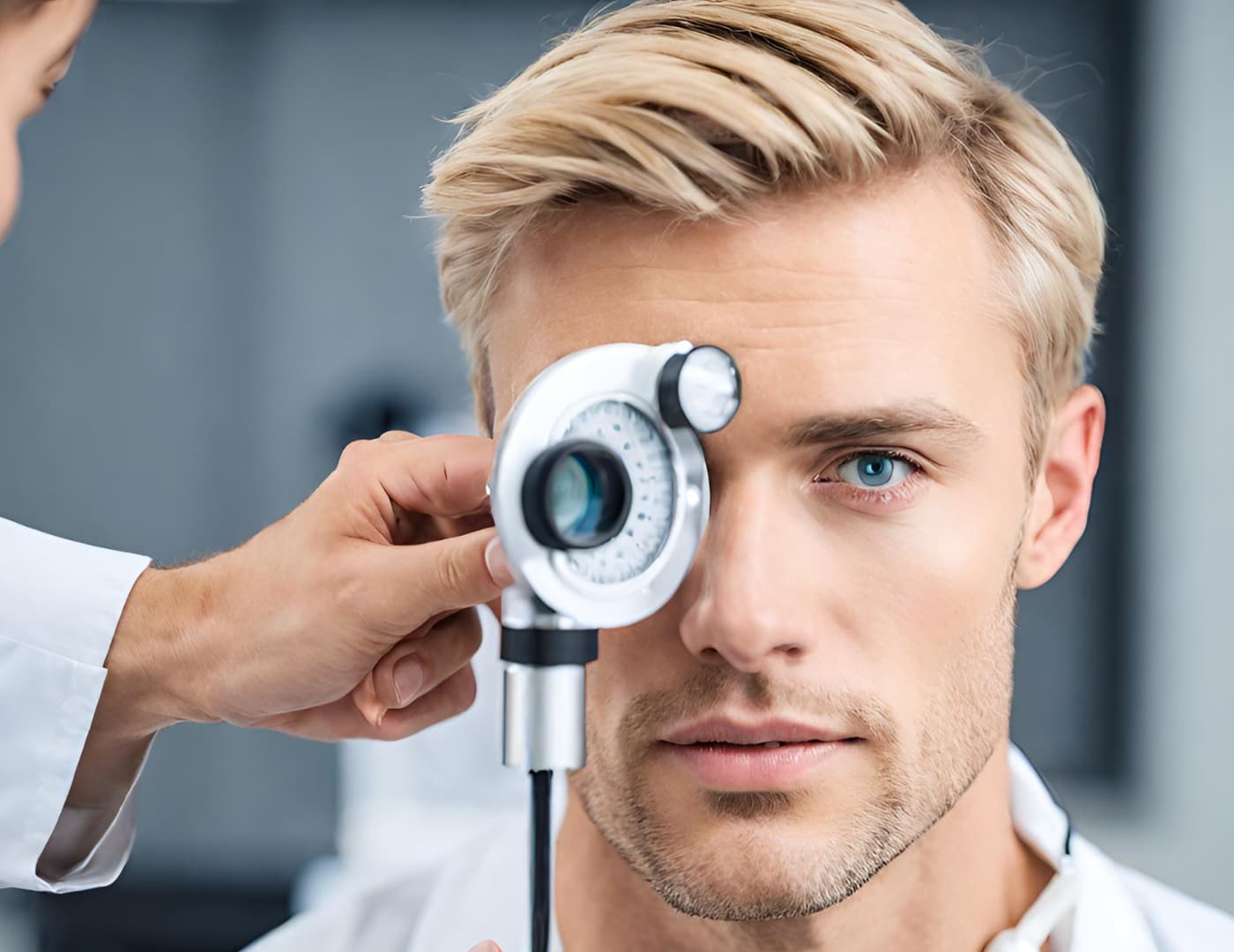Understanding Farsightedness: Causes, Symptoms, and Treatment Options

Farsightedness, also known as hyperopia, is a common vision condition that affects millions of people worldwide. While it may sound like a minor inconvenience, hyperopia can have a significant impact on daily life if left uncorrected. In this article, we will explore what farsightedness is, its causes, symptoms, and the recovery from cataract surgery. Whether you’re dealing with hyperopia yourself or simply curious about this vision condition, read on to gain a better understanding.
What Is Farsightedness?
Farsightedness, or hyperopia, is a refractive error of the eye that affects a person’s ability to see nearby objects clearly. It occurs when the eyeball is too short or the cornea has too little curvature, causing light entering the eye to focus behind the retina instead of directly on it. This results in blurred vision when looking at objects up close, such as reading a book or using a computer.
Causes of Farsightedness
Farsightedness can be attributed to both genetic and environmental factors. Some individuals may have a family history of hyperopia, making them more predisposed to the condition. Additionally, as people age, they may become more farsighted due to changes in the eye’s structure.
Symptoms and Signs
The most common symptoms of farsightedness include:
- Blurred vision when reading or performing close-up tasks.
- Difficulty focusing on near objects.
- Eye strain, headaches, or discomfort after prolonged near work.
- Squinting to see clearly up close.
- Difficulty seeing objects clearly at any distance.
- These symptoms can be particularly bothersome for those who rely on good near vision for their work or hobbies.
Diagnosis and Eye Exams
Diagnosing farsightedness is typically done through a comprehensive eye exam performed by an optometrist or ophthalmologist. During the exam, various tests are conducted to measure the degree of hyperopia and determine the appropriate prescription for corrective lenses.
Regular eye exams are essential for early detection and treatment of farsightedness. If left uncorrected, hyperopia can lead to eye strain and discomfort, making it challenging to perform everyday tasks.
Treatment Options
Fortunately, farsightedness is easily correctable, and individuals with hyperopia have several treatment options:
- Eyeglasses: Prescription eyeglasses with lenses that have a positive optical power (convex) can effectively correct hyperopia. These glasses help redirect incoming light onto the retina, allowing for clear near and distance vision.
- Contact Lenses: Soft or rigid gas-permeable contact lenses are available for farsighted individuals who prefer not to wear eyeglasses. Contact lenses sit directly on the eye’s surface and provide clear vision by altering the way light enters the eye.
- Refractive Surgery: Refractive surgeries like LASIK (Laser-Assisted In Situ Keratomileusis) can be an option for those seeking a more permanent solution. LASIK reshapes the cornea to improve the eye’s focusing ability, reducing or eliminating the need for glasses or contact lenses.
Farsightedness
Can LASIK correct farsightedness? LASIK is a widely known refractive surgery primarily associated with treating nearsightedness (myopia). However, LASIK can also be an effective treatment for farsighted individuals. The procedure reshapes the cornea, allowing light to focus correctly on the retina, thus improving near and distance vision.
Before considering LASIK for farsightedness, it’s crucial to consult with an experienced eye surgeon who can assess your candidacy for the procedure and discuss potential risks and benefits.
Other Surgical Procedures
In addition to LASIK, there are alternative surgical procedures that can correct farsightedness, such as Photorefractive Keratectomy (PRK) and the implantation of phakic intraocular lenses (IOLs). These options offer flexibility for individuals with specific eye characteristics or preferences.
Lifestyle Adjustments
While corrective measures like glasses, contact lenses, or surgery can address farsightedness, there are also lifestyle adjustments that can help manage this condition effectively:
- Proper Lighting: Ensure well-lit environments for reading and close-up tasks to reduce eye strain.
- Regular Breaks: Take breaks when doing prolonged near work to relax your eyes and prevent discomfort.
- Outdoor Activities: Spend time outdoors to provide a natural contrast between near and far objects, which can be beneficial for your eyes.
- Computer Use: Adjust the screen settings and position to reduce eye strain when working on a computer.
Advanced Treatments for Farsightedness
For individuals with severe hyperopia or those seeking alternatives to traditional glasses or contact lenses, advanced treatments are available. These treatments offer specialized solutions to address farsightedness effectively.
- Implantable Contact Lenses (ICL): ICLs are an excellent option for individuals with high hyperopia or those who aren’t suitable candidates for LASIK or PRK.
- Light Adjustable Lens (LAL): LAL is an innovative option that allows for precise customization of vision correction. During the procedure, a light-sensitive lens is implanted into the eye.
- Combination Procedures: Some individuals may benefit from combining different treatments to address complex vision issues.
Recovery and Follow-up
Recovery from surgical procedures such as LASIK, ICL implantation, or LAL may require some time and careful adherence to post-operative instructions. It’s essential to attend follow-up appointments with your eye care provider to monitor healing progress and ensure optimal visual outcomes.
Lifestyle Enhancements
While surgical and corrective options effectively address farsightedness, adopting a few lifestyle enhancements can further improve your overall visual comfort:
- Eye-Friendly Diet: Nutrients like vitamins A, C, and E, as well as minerals like zinc, can support eye health. Incorporate foods like carrots, leafy greens, and citrus fruits into your diet.
- Eye Exercises: Practice eye exercises designed to relax and strengthen your eye muscles. These exercises can help alleviate eye strain associated with prolonged close-up work.
- Hydration: Stay well-hydrated, as proper hydration can contribute to overall eye comfort.
- Blink Regularly: When working on digital devices or reading, make a conscious effort to blink regularly. This helps prevent dry eyes and maintains tear film stability.
Conclusion
While some risk factors for farsightedness, such as genetics, cannot be controlled, regular eye check-ups are essential for early detection and intervention. Comprehensive eye exams can detect hyperopia and other vision problems before they become significant issues.
Understanding farsightedness, its causes, symptoms, and treatment options is crucial for maintaining good eye health. Whether you choose eyeglasses, contact lenses, refractive surgery, or a combination of these methods, addressing farsightedness can greatly enhance your quality of life and overall visual comfort. Don’t hesitate to seek professional guidance and care for your vision needs.




